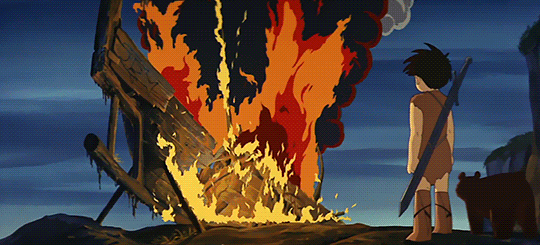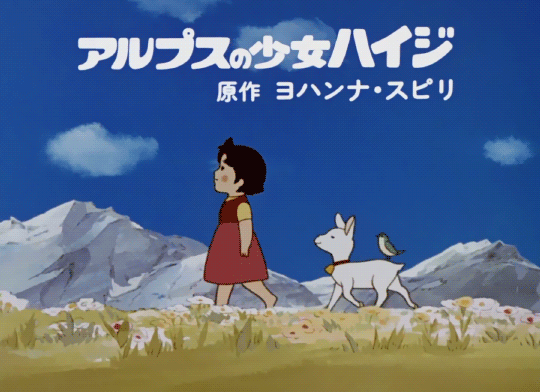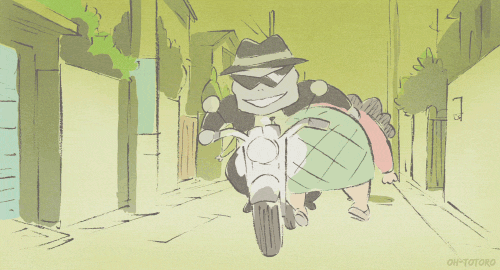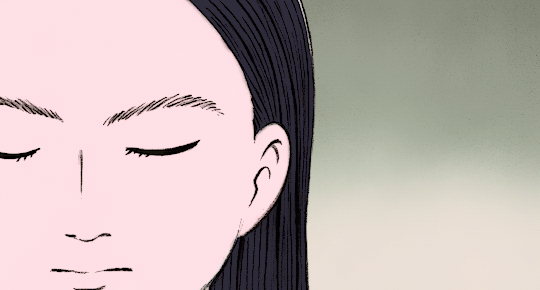originally posted at https://canmom.tumblr.com/post/643493...
Hey friends of the ‘Thursday’ persuasion. Apologies for the terribly late start today. (All these little disclaimers will be deleted when I finally migrate these posts to my website of course.)
Tonight! It’s back to the anime auteur tour; in this case, the big Studio Ghibli guy who is not named Hayao Miyazaki. That is to say: Isao Takahata! Sadly, while we still (for now) have Miyazaki, Takahata passed away in 2018, but he left some pretty incredible films.

Unlike many animators we’ve encountered over the course of these nights, Takahata made his way into the industry not from art school, but through a literature degree. He was drawn to film, and especially the potential of animation, and managed to land a job at Toei Animation, assisting with direction of their first TV shows such as Wolf Boy Ken (the studio having previously only made films). Toei is one of the oldest anime studios still to exist, although as ever, a studio is just a shell around the various people moving in and out of its doors. And who were those people?
At Toei, Takahata ran into a couple of people who would end up having a profound influence on his life. One was his mentor, Yasuo Ōtsuka; the other was of course ⭐Hayao⭐Miyazaki⭐, with whom Takahata would work for the rest of his life, co-founding Studio Ghibli, etc. etc. With Ōtsuka’s support, Takahata directed a technically innovative film called The Great Adventure of Horus, Prince of the Sun (localised abroad as The Little Norse Prince) in 1968. The film made a major impact on the industry with its developments in cel animation (I would like to find out exactly what!), but not so much at the box office…

…which might have a lot to do with Takahata and Miyazaki’s attempts to unionise the workforce at Toei, leading the studio heads to give the film a limited theatrical run as an act of sabotage. (If true, it would be kind of cutting off their nose to spite their face there, but it’s a fun little conspiracy theory at any rate.)
Now, Japanese animation in the 60s looks very different from what we’re used to today, but even back then we can see signs of Takahata’s meticulously detailed style. Alongside directors like Kon, he’s known for bringing a kind of ‘realism’ to animation in terms of cinematography and drawing styles, as well as for being among the first to try pulling the subject matter of animation towards dramas aimed at adults - paving the way for people like Oshii down the line.
Given the difficulties over Horus, Takahata faced demotion at Toei, and he and Miyazaki jumped ship. They failed to get the rights for Pippi Longstocking, and instead the pair returned to work with Ōtsuka, who had moved to TMS Entertainment (another venerable studio) on one of the first Lupin III TV series. (fun fact about anime history: it’s Lupin all the way down!) and Panda! Go Panda!.

The next big break for the duo came when they were approached by a company called Zuiyo to create a series Heidi: Girl of the Alps, at the studio’s new subsidiary Nippon Animation.
Heidi ended up huge, in significant part due to the absurd amount of effort put into it by the standards of TV animation, Takahata working furiously to turn his research trips to the Alps into accurate onscreen representations - an experience that was highly formative for Hayao Miyazaki, who was so frustrated by the tight deadlines and necessary cut corners of TV animation that he became determined to go into film. It also started to pin down the now widely standardised pipeline of anime production, among the first productions to introduce the a ‘layout’/’first key’ stage in the process of planning a shot which led to our modern system of flashy key animators…
Well, all this paid off - while I don’t have the stats to hand right now, I believe I read that Heidi was able to easily go toe to toe with Gundam at its height. Takahata continued to work in TV for the rest of the 70s, with notable works including Miyazaki’s Future Boy Conan (an early instance of the post-apocalyptic green settings he’d make his name with) and an adaptation of Anne of Green Gables (keeping up the theme of childrens’ literature!) And during this period, he worked with other notable animators like Gundam creator Yoshiyuki Tomino.

But of course, the really big break was working with Miyazaki on Nausicaa of the Valley of the Wind in 1984 - the film that launched Studio Ghibli. And despite the quite significant influence he had early on, it is his Ghibli films which best represent Takahata’s legacy.
Takahata’s first film at Ghibli was the absolutely devastating war movie Grave of the Fireflies, about two children suffering the horrors of late-WWII Japan. We won’t be watching that tonight, if only because I wanna be fortified in the right mental space. Covering such subjects in animation wasn’t completely novel - we previously watched Madhouse’s Barefoot Gen, which also tells the story of children living through the war - but Takahata handled it with an unusual level of subtlety and care, a startling contrast to Miyazaki’s playful My Neighbour Totoro which released alongside it (back to back at the original showing!)

His next film, Only Yesterday, pushed things in an even more unusual direction for animation at the time - an entirely non-fantastical drama about the a woman reminiscing on her life, and the dreams of her childhood self, while escaping to the countryside. The film is notable for pushing to an extreme degree of realism; like Satoshi Kon, it would use the clarity of animation to create a certain effect that would be difficult in live action, but here the focus is less on the line between real and not-real or clever editing, more just like… a very very polished animated film? idk I’ve not seen it.
So, Takahata’s the serious one, Miyazaki’s the fanciful one? Not at all: Takahata’s next film, Pom Poko (1994) [full title: 平成狸合戦ぽんぽこ Heisei-era Tanuki War Ponpoko] jumped to the other end, a pointed comedy in which tanuki (complete with the giant balls described in mythology) intervene against environmentally destructive development. (I am not sure of the course of Takahata’s ideological development at this time - if Miyazaki broke with his early crude Marxism and became increasingly preoccupied with the environment, only to become rather blackpilled in old age and prioritise making films for his kids, I have less idea of Takahata’s development, but this suggests he definitely shared at least a few of Miyazaki’s concerns right?)

From every glimpse I’ve seen of it, Pom Poko is a fascinatingly lush film, drawing heavily on the history of Japanese art (you may recognise this skeleton for example from a famous ukiyo-e print) and I’m really excited to watch it at last.
Pom Poko seemed to satisfy Takahata’s interest in traditional, cel-shaded animation, and his next few films started experimenting stylistically. My Neighbours the Yamadas (1999) was a family comedy which leapt right to the end of the stylisation continuum, taking after four-panel manga strips. It’s a series of structured vignettes with ironic titles like ‘patriarchal supremacy restored’, but ultimately I haven’t watched it bc it sounded a bit tediously wholesome :p

For a decade after that, Takahata didn’t really direct much, beyond a brief appearance in the poetry themed collaboration project Winter Days. His next big film, though, would be a big one: a beautifully stylised rendition of the mythological The Tale of the Bamboo-Cutter, a story he’d long considered since his days at Toei. So he went for a gorgeous watercolour effect - a style I’ve almost never seen anything approach, except perhaps the Te Wei ink wash-styled films we saw on donghua night. The funding for such a lavish project came from Seiichiro Ujiie, chairman of Nippon TV, who was apparently such a fan of Takahata that he donated five billion yen and pleaded the Ghibli producer to let Takahata make another film… only to die before it was finished. Oof.

Kaguya tells the story of a girl who descends from heaven and is discovered as a child by a bamboo cutter, living a simple life in the countryside before being discovered and taken to the Heian period court. The art, fittingly, is based on the contemporary yamato-e style, with round faces, minimalist lines and elaborate court dress on full display. All this manages to fill the myth with a lot of character and emotion… and tragically I only ever got to see half this film due to circumstances, so I am dead excited to finally watch it with friends.
That brings us to Takahata’s final film - although not as director; the Dutch-Japanese collaboration The Red Turtle which we watched a few months back.

So, tonight! I’m going to show a little of Takahata’s work throughout that very storied career - not much because even if we had the full time available, there is just too much. Tonight we’re seeing Horus and Pom Poko - I wanted to slot Kaguya but the tube are congested and I’m not sure there’s time! T_T
I’m not sure I yet feel ready to draw out the overall arc or themes of his career or any such thing, but I know all of these films are absolutely beautiful, often moving, and generally distinctive in the history of anime etc. etc., so I do hope you’ll want to come watch w me ^^
Animation Night 40 will be starting almost immediately at 9:20pm UK time at twitch.tv/canmom - see you there……..
Comments